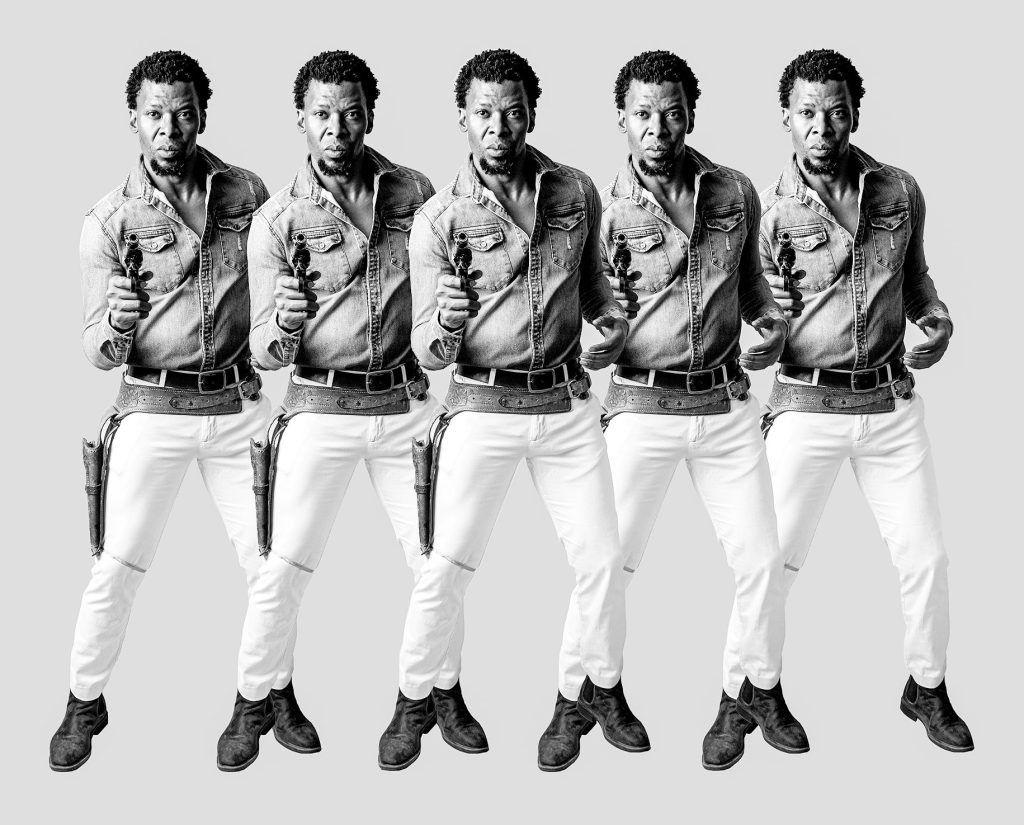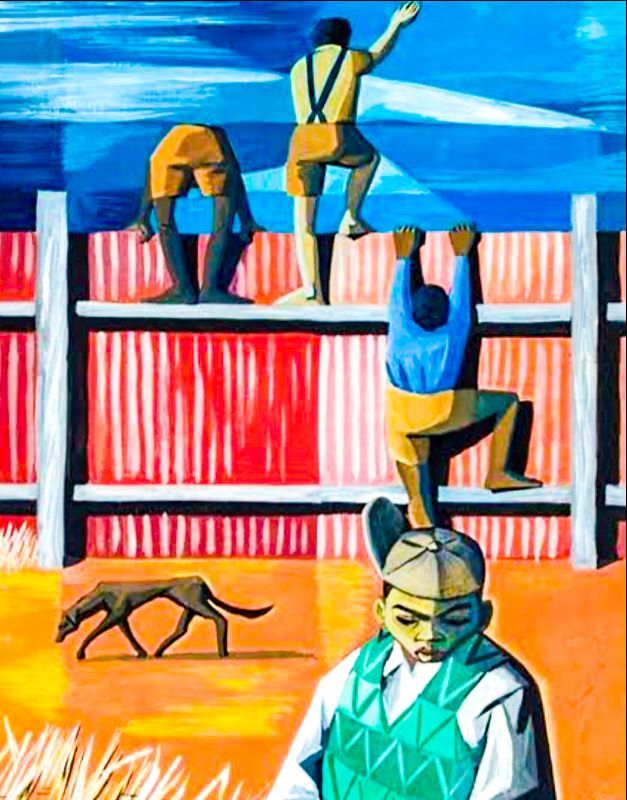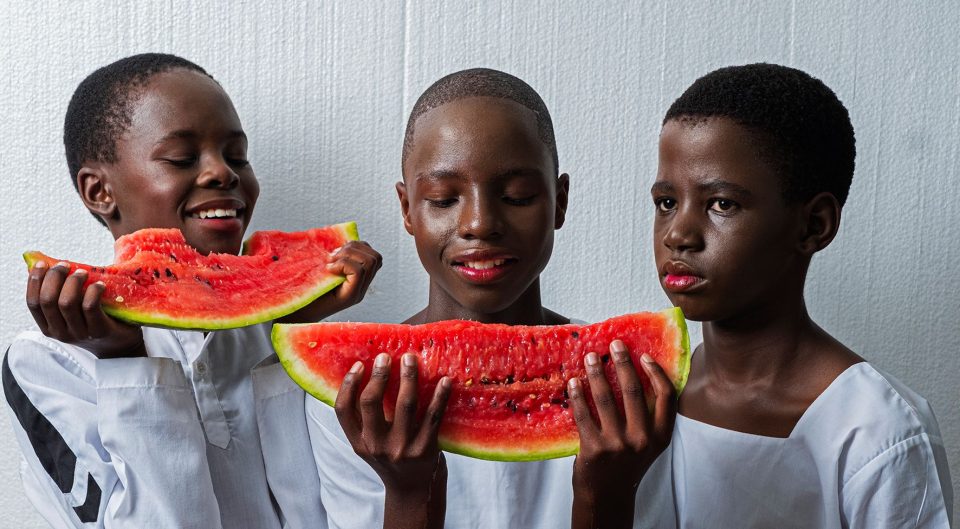SEASONED lensman, M Jacob Mawela had to invoke visual creations from the 60s in order to deliver on an Art Bank of South Africa-commission for his latest artistic endeavour.
Tasked with creating artworks (84,1cm x 118,9cm in scale and printed on archival paper) for the Department of Sport, Art and Culture’s agency, Mawela produced his photographic interpretations of two South African artists’ works, Peter Clarke’s The Fence and Vladimir Tretchikoff’s Melon Time (both dated 1960) – as well as that of American, Andy Warhol’s Eight Elvises (1963).
His presentations convey a trio of themes pertinent to his country, namely, class divisions, inequality and opulence.
Produced at different locations which incorporated a specially constructed set along historic Kliptown’s Beacon Road, a buzzing Pimville hair saloon and a Klipspruit photographic studio, the Pimville-based creative utilized the services of teenage models, Generations actor, Vuyo Dabula – as well as a 2-year old Greyhound.
Additionally, he also brought into play props such as a revolver, holster, belt, costumes and an out-of-season watermelon.
The Fence Clarke’s The Fence (featuring the dog) touches on class division represented by the corrugated zinc barrier the trio of curious boys are depicted clambering onto – hoping to scale it in order to behold what lies beyond! Clarke, whom Mawela knew personally and had visited at his Ocean View home back in 2000 – in addition to covering his Listening to Distant Thunder retrospective exhibition at the Standard Bank Gallery in the Joburg CBD in 2011 (at which fellow Kaapse luminaries such as erstwhile University of the Western Cape Vice-Chancellor, Professor Jakes Gerwel, were in attendance) – depicted fences in his body of works as psychological barriers conveying his deep fascination with an acute and sustained reflection on questions of proximity and distance, on inclusion and exclusion, on belonging and not.
For his re-interpretation of Clarke’s curious vista, Mawela had to construct a set on the perimeter of a residential property along historic Kliptown’s Beacon Road and further employ labourers to build it and paint it, so as to resemble what appears in the 1960 painting. A soul who reveres the oeuvre of renowned filmmakers such as Steven Spielberg and Clint Eastwood, Mawela relished the whole exercise as it offered him the opportunity to assume a directorial mode.
He additionally had to source the services of tailors who had to knit the sleeveless top worn by the model facing the viewer in the frame. Kliptown artist, Prince Massingham assisted him with identifying the trio of youngsters depicted scaling the corrugated fence.

Mawela also had to obtain the clothes (including suspender belts) worn by the trio.
A further exciting element in the making of his version was the introduction of a lithe 2-year-old Greyhound named Line – sourced from a local Kliptown breeder who utilizes the dogs for hunting.
Owing to the dog not cut out for what Mawela aimed to achieve – the lensman had to do repeated takes until Line appeared in similar poise to the dog featured in Clarke’s work.
Melon Time Through Melon Time, described by its creator, Vladimir Tretchikoff, as, “To have and to have not,” Mawela seek to draw attention to the malady of socio-economic inequality as mirrored by the sadness registered on the face of the kid bereft of a watermelon. A painting the photographer had always had designs on re-creating – his challenge had ever been on finding a model having a facial resemblance to the child depicted staring forlorn in the famous frame.
He eventually settled on a New Canada resident he came across during a visit to an Orlando East school a mere few weeks before executing the photo session at Apo’s Hair Salon in Pimville.
The white tops worn by the three lads were made by tailors Mawela came across at a fabrics store in downtown Joburg. He also had to call upon the service of a makeover artist who mainly works in the television industry, to apply facials on the boys. By the time he pulled the shoot off – watermelons were out of season, with him having to travel out of town to find the one ultimately featured in his photograph.
Five Vuyos For Warhol’s Eight Elvises – a screen-print from a publicity image of the 1960 movie, Flaming Star, depicting rock star, Elvis Presley pointing a revolver – Mawela gave his image a local twist by casting Dabula on the back of the popular thespian having starred in the spaghetti Western, Five Fingers for Marseilles – proceeding to name his reconstruction, Five Vuyos. Opulence is depicted through Dabula being replicated five times in a single frame – lending credence to Warhol’s remark: “the more you look at the same exact thing … the better and emptier you feel.”

Eight Elvises (which incidentally was bought by a private collector for a reported $100 million a few years ago), resonates with the saying, “the rich keep on getting richer” – and is the converse of the “have-nots” as depicted by the watermelon less kid in Tretchikoff’s Melon Time.
Delivering on an opportune commission mandated under the auspice of the Presidential Economic Stimulus Programme 3, not only represented a conscious career shift for the more photo journalistically inclined Mawela but was also an excuse to invoke linkages with people he personally knows (Clarke and Dabula) – as well as assuming the role of a filmmaker.
Dabula, whom Mawela knew from his pre-celebrity days and is married to a Pimville home girl and neighbour of the photographer, wavered away his industry hire rate for the sake of granting the realization of his creation.
Initially having intended to apply the stroboscopic effect utilized by Gjon Mili in his images of Pablo Picasso – Mawela eventually settled on achieving his effect via a Photoshop process.
Ed Note: About Art Bank of South Africa Launched in 2017, the Art Bank of South Africa is a national programme of the Department of Sport, Arts and Culture and is hosted by the National Museum Bloemfontein (Oliewenhuis Art Museum), an agency of the DSAC.
It is tasked with purchasing artworks from South African artists to lease and sell the artworks to South African government departments, private companies and individuals.
All images top- Jacob MAWELA ( Melon Time- ‘To have and to have not’- Vladmir Tretchikoff).

